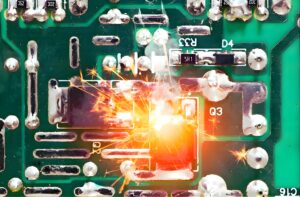Checking and avoiding PCB circuits requires comprehensive consideration of multiple aspects such as design, manufacturing, testing, and quality control. By reasonable inspection and preventive measures, the risk of circuit board short circuit can be effectively reduced, and the reliability and stability of the product can be improved.
1、 Method for checking circuit board short circuit
Observe PCB design diagram: Open the PCB design diagram, light up the short circuited network, observe which positions are closest, and pay special attention to the short circuit situation inside the IC.
Visual inspection: For manually soldered circuit boards, a visual inspection of the PCB is required before soldering to ensure that there are no excess solder, solder joints, or other issues.
Use testing instruments: Use tools such as multimeters or milliohmmeters to check for short circuits in critical circuits.
Cut line method: For single/double-layer boards, the cut line method can be used to divide the circuit board into several parts, power them on separately for inspection, and gradually eliminate short-circuit points.
Specific component inspection: For BGA chips, as their solder joints are covered by the chip and are multi-layer boards, it is best to separate the power supply of each chip during design and connect them with magnetic beads or 0-ohm resistors for easy positioning in case of short circuits.
2、 Methods to avoid short circuits on circuit boards
Check wiring: When designing a PCB, carefully inspect the wiring. For signal lines that may be short circuited, increase insulation isolation to prevent interference between them.
Optimize layout: Adjust the position or layout of components, increase sufficient spacing, and avoid short circuits caused by too small distances between components.
Using solder mask or isolation layer: During the manufacturing process, solder mask coatings or isolation layers are used to increase the isolation of signal lines and reduce the possibility of short circuits.
Add shielding: For circuits or signal lines that are susceptible to external interference, add shielding covers or layers to reduce interference and minimize the risk of short circuits.
Quality control: Strict quality control is carried out during the manufacturing process to ensure good welding quality and eliminate welding defects that may cause short circuits.
Circuit analysis and simulation: During the design phase, use circuit analysis tools and simulation software to validate and optimize the design to reduce the possibility of short circuits.
















